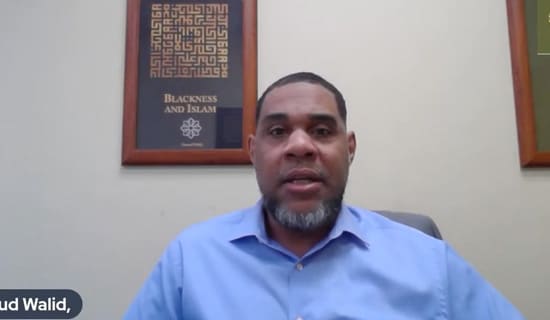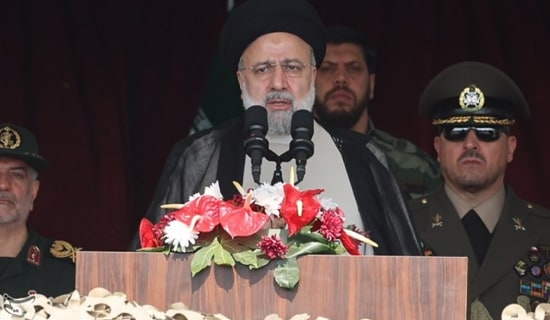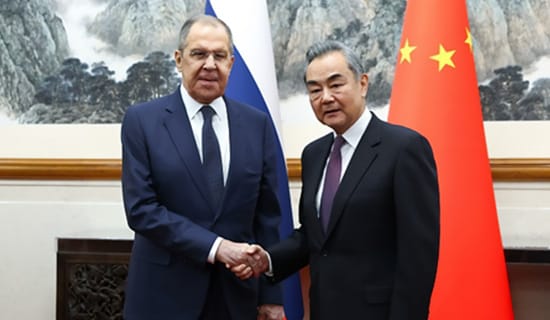Introduction
In August 2009, PNA Prime Minister Salam Fayyad issued a document on ending the occupation and establishing an independent Palestinian state. [1] The document "sets out [the] national goals…, the priorities and the activities of the PNA institutions for the next two years" (p. 3). It also declares that "the establishment of a Palestinian state within two years is not only possible, it is essential" (p. 5). The document is at once a political manifesto and a blueprint for institution building.
Concurrently with the publication of Fayyad's document, the United Nations Development Program (UNDP) issued its annual Arab Human Development Report for 2009, [2] which illuminates some of the social and economic aspects of the "Occupied Palestinian Territories."Since the two documents, Fayyad's and UNDP's, complement one another, we have included an appendix detailing some of the findings of the UNDP report on the OPT.
Fayyad's Political Manifesto
As a political manifesto, Fayyad's document first sets out the ultimate national goal of the PNA, namely "the creation of the independent state of Palestine on the Palestinian territory occupied in 1967, with East Jerusalem as its capital." (p. 2) [3]
Recognizing the constraints arising from the limited timeframe, the document settles for the establishment of a "de facto state apparatus within the next two years" (p. 4). Although it advocates "a viable two-state solution" (p. 4), and calls for "positive and proactive steps" to end the occupation and "reach a just and lasting political settlement in our region" (p. 2), the name of the other state (Israel) is not mentioned.
The document urges the Palestinians "...to realize [their] fundamental objective and unite behind the state-building agenda over the next two years" (p. 4); states that "[t]he [Palestinian] state will forever be a peace-loving state that rejects violence [and is] committed to peaceful coexistence with the world community of nations" (again, no mention of coexistence with Israel) (p. 5); and warns that the two-state solution will be "terminally undermined" should the policies "to demolish and evacuate Palestinian homes" in and around Jerusalem continue (p. 9).
On the issue of the Palestinian refugees, there is definitely a degree of flexibility atypical of official Palestinian and Arab political statements. Rather than calling for "the return" of all refugees to their previous homes, the document states that "the issue of the refugees [will be] addressed in the final stage of negotiations." It continues: "It is certain that no political settlement can be accepted by the Palestinians without a just and agreed[-upon] solution to the fundamental issue [of the refugees] in accordance with international resolutions, including U.N. General Assembly Resolution 194" (p. 10) which speaks of offering the refugees either return or compensation.
The Structure of the Proposed State
As for the government of the Palestinian state, Fayyad envisages the creation of no less than 22 ministries and 10 autonomous agencies, including the ministries of "Wall [i.e. separation fence] and Settlement Affairs," "Detainee Affairs," and "Jerusalem Affairs." These ministries appear to be overlapping in function, since they all deal with issues directly related to the future relations between the Palestinian state and the State of Israel. Three of the 10 autonomous agencies - those of "Palestinian Water Resources," "Palestinian Energy and Natural Resources," and "Palestinian Environment Quality" - also appear to have overlapping functions.
However, the most significant aspect of this elaborate scheme is what it does not include. Fayyad says not a word about the offices of the president and prime minister, about their authorities and respective responsibilities, or about how they will interact. For example, the document does not address the following:
- The election of the president, the duration of the president's term in office, and the number of terms that a single president may serve
- The process of nominating the prime minister and the division of executive responsibilities between prime minister and president
- The procedure in case one of these offices becomes vacant
- The functioning of the ministries and the autonomous agencies and their ultimate accountability
- The relationship between the executive and the legislative branches of government
It is hard to assume that these omissions are an oversight on Fayyad's part; they may have to do with the precarious relationship that exists today between Fayyad and President Mahmoud Abbas.
Fayyad also avoids any reference to a central bank, which is a tacit admission that the Israeli shekel will continue to be the legal tender in the proposed Palestinian state in the foreseeable future. In fact, Fayyad makes no reference to the banking sector at all - neither to its role in the future development of the national economy, nor to its role in the private sector.
Moreover, the vast network of ministries and government institutions he proposes would place too heavy a burden on the Palestinian national budget - especially considering that this budget relies heavily on foreign aid. The proposed structures also appear to contravene Fayyad's statement that "the Government will continue [to pursue] policies and measures designed to restrict growth of the public sector wage bill" (p. 17).
The National Economy
SUPPORT OUR WORK

In a section of the introduction headed "Foundational Principles" (p. 6), Fayyad draws a capitalist vision of the future Palestinian economy: "The economic system in Palestine will be based on the principles of a free market economy within the context of legitimate and responsible competition. The state shall strive to promote social, economic, and cultural growth and the scientific advancement of the Palestinian people, while confirming its commitment to ensuring social justice and providing protection to vulnerable groups and to those with special needs. (p. 7)
The main problem with Fayyad's economic plan, as laid out in the document, is insufficient detail. His program for sustainable economic recovery relies on seven principles (p. 35):
- Creating an enabling investment environment
- Promoting the role of the private sector
- Supporting Palestinian products and expertise
- Developing national resources
- Developing infrastructure
- Transmitting knowledge and supporting Palestinian innovation
- Expanding bilateral and multilateral cooperation
However, these principles are so general that they are virtually meaningless, and they are not sufficiently fleshed out in the accompanying passages. Especially noticeable is the lack of specific details such as timetables and cost estimates. Consider the issue of education, for example. Developing human capital through education is crucial to building a modern economy. However, renovating a traditional education system so that it meets the needs of modern technology is both costly and time-consuming. Above all, it requires a complete overhaul of the curricula. But Fayyad does not say how the West Bank education system will be redesigned.
Another issue that requires further attention is the development of infrastructure, a costly enterprise under the best of circumstances, let alone under the restrictive policies of the occupation. Fayyad says almost nothing about transportation priorities in the area under the PA's jurisdiction, about cost estimates, or about sources of funding. Also, it is not clear why he places a higher priority on joining the World Trade Organization than on joining the IMF and the World Bank, where sources of development funding would be more readily available.
Conclusion
Perhaps it is too much to expect specificity from a document which is meant, first and foremost, as a political manifesto. Fayyad asserts that the future Palestinian government "will be guided by international law," will seek to "reach a just and lasting political settlement in our region," "will be fully engaged with the international community," and "should work to secure the full backing of [the Palestinians'] Arab brethren, and the political and economic support of [their] friends around the world." (2)
However, an important element is missing: a statement about the Palestinian state's relations and coexistence with Israel. After all, the state of Palestine will share its longest borders with this country, as well as its water and natural resources, and the two states will have to maintain extensive trade and economic relations, reach security arrangements, share tourism sites and deep-sea ports, and possibly even form a customs union.
Appendix
Arab Human Development Report 2009: Challenges to Human Security in the Arab Countries - Data Relevant to the Occupied PalestinianTerritories [4]
Concurrently with the publication of Fayyad's document, the United Nations Development Program (UNDP) published its 2009 Arab Human Development Report. The eighth chapter of this report deals with "occupation, military intervention and human insecurity," with a focus on the Palestinian Occupied Territories (OPT), Iraq, and Somalia. The introduction to this chapter states that "occupation and military intervention expose human security to violence on three levels - institutional, structural, and material." However, the data presented in Annex I to the report reveals a deeply ironic fact: On a number of social and economic indicators, the OPT fared considerably better than Syria and Egypt (used as benchmarks in this appendix), and in some instances, it scored as high or even higher than some of the oil countries.
The following are data from the Arab Human Development Report 2009 (which is written by Arabs and printed in Beirut):
Table 01 gives data on the "Human Development Index," concerned with "expanding the individual's capabilities and opportunities." The OPT is rated at 106, two notches below oil- and gas-rich Algeria (104), but higher than Syria (108), Egypt (112), Morocco (126) and Yemen (153).
The OPT's adult literacy rate (% aged 15 or older) for 1995-2005 stands at 92.4, versus 80.8 for Syria and 71.4 for Egypt. The literacy rate is even more impressive when compared to that of the oil countries, namely Qatar (89.0), the UAE (88.7), Bahrain (86.5), and Saudi Arabia (82.9). Only Kuwait scored higher than the OPT, with 93.3 (Table 11). The adult literacy rate for males in the OPT was one of the highest in the Arab world: 96.7. (Table 25).
As for the youth literacy rate (% aged 15-24) in 1995-2005, the figure for the OPT was 99.0, equal to Jordan and higher than any other Arab country, with the exception of Kuwait (Table 11). The literacy rate for females in the OPT was 88.0, exceeded only by Lebanon (93.6), Kuwait (91.0), Qatar (88.6) and the UAE (87.8). Compare to Saudi Arabia (76.3), Algeria (60.1), Syria (73.6), and Egypt (59.4) (Table 25).
Equally striking is the data on "commitment to health: resources, access and services." Table 05 provides figures regarding expenditure on public and private health services (as % of GDP). The figures for the OPT were 7.8 and 5.2, respectively, totaling 13% of the GDP. This combined figure is higher than that of any other Arab country, without exception. The closest figure was the one for Lebanon, where the health expenditure for both categories came to 11.6% of the GDP. The figures for the UAE, Saudi Arabia, Egypt, and Syria are 2.9, 3.3, 4.7 and 5.9, respectively.
The heavy expenditure on health has significant outcomes. In 2005, the mortality rate in the OPT for children under five (per 1,000 live births) was 23, compared with 26 in Saudi Arabia, 30 in Lebanon, 39 in Algeria, 33 in Egypt and 40 in Morocco (but only 15 in Syria) (Table 09). A related figure is "probability at birth of not surviving to age 40 (2000-2005)." The figure for the OTP was 5.2, compared to Saudi Arabia (5.7), Jordan (6.3), Algeria (7.7), Egypt (7.5) and the astronomical figure for Somalia (38.9). Syria, on the other hand, again scored better than the OPT (4.6) (Table 03).
As for the parameter of "children under weight for age (% of children under age 5)," the OPT comes in at only 5%, which is equal to Libya but lower than the figures for Egypt (6), Syria (7), Morocco (10), the UAE and Saudi Arabia (14), and Yemen (46). Jordan, Lebanon, and Tunisia displayed a lower figure (4%) (Table 06).
Life expectancy in the OPT is about average for the region. In 2005, life expectancy at birth in the OPT was 74.4 for females and 71.3 for males. The figure for females compares favorably with that of Kuwait (79.6), Saudi Arabia (74.6), Jordan (73.8), Syria (75.5), and Egypt (73.0); the figure for males compares favorably with that of Kuwait (75.7), Saudi Arabia and Jordan (70.3), Syria (71.8) and Egypt (68.5) (Table 25).
The OPT scores appreciably low in one indicator - namely the use of improved sanitation. In 2004 (the most recent year examined), the percent of individuals using improved sanitation stood at 73, compared to 98 in the UAE and Lebanon, 93 in Jordan, and 90 in Syria. However, this figure is higher than the ones for Egypt (70) and Yemen (43). In terms of using improved water sources, the OPT rates high, at 92%, but slightly lower than Jordan (97%), Syria (93%) and Egypt (98%).
In the area of modern technology, the number of mobile phone subscribers (per 1,000 people) in 2005 was 302, which is similar to the figure for Jordan (304) and decidedly higher than the figures for Syria (155), Egypt (184), and oil-rich Libya (41). The number of Internet users (per 1,000 people) in 2005 was 67; only slightly lower than Egypt (68) and oil-rich Saudi Arabia (70), and higher than Syria (58) and Libya (36). At the high end of the scale are Qatar (269) and the UAE (308) (Table 12).
There was one area in which OPT scores negatively high: that of "Intentional homicides" (per 100,000 people). The figure for 2000-2004 was 4, somewhat lower than Lebanon (5.7) which had the highest figure. In most other Arab countries the figure ranged between 0.4 (Egypt) and 1.4 (Algeria) (Table 24).
*Dr. Nimrod Raphaeli is Senior Analyst (emeritus) at MEMRI.
Endnotes:
[1] For an English translation of the document published by the Palestinian news agency WAFA, see http://english.wafa.ps/?action=detail&id=12943.
[2] United Nations Development Program, Regional Bureau for Arab States, Arab Human Development Report 2009: Challenges to Human Security in the Arab States," New York, 2009 (http://www.arab-hdr.org/contents/index.aspx?rid=5 ).
[3] In subsequent passages, the word "East" is dropped, so that the document speaks of establishing a Palestinian state with Jerusalem as its capital (e.g., 3, 4, 5, 33).




